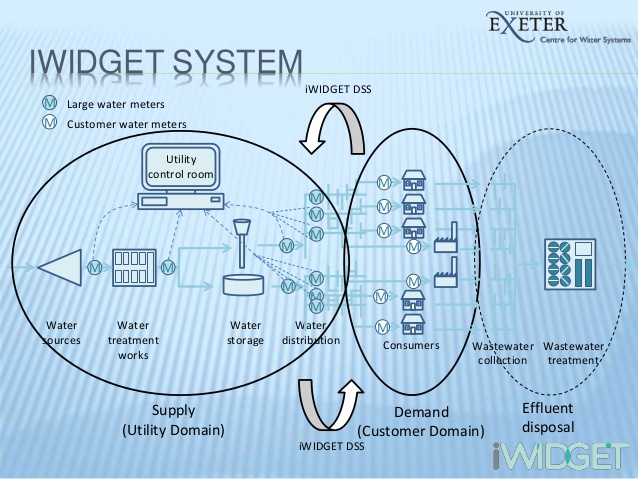
By Dragan Savic*
Smart cities can be surprisingly dumb about applying new technology to old water problems.
Maybe citizens assume their centralised invisible utility will make top down decisions. Or perhaps water professionals can’t harness decentralised tools to manage from the bottom up.
But attitudes are shifting in a happy convergence. The rising potential from information and communication technology (ICT) has grown both accessible and powerful. For water, ICT may include: the internet of things, smart sensors, machine learning, big data analytics, visualisation, gamification, and cloud computing.
Collectively, these tools empower a new cadre of water professionals, trained in hydro-informatics, to help cities deal with wastewater and urban drainage in smarter ways.
One way to cut urban waste is to manage water before it is used. Advanced metering infrastructure can help both utilities and customers identify and address leaks on both sides of the customer meter, optimise pressure, and reduce demand at the point of use. Spatial and temporal aggregation of the demand pulses through the bottom-up approach. It enables proper assessment of nodal demands for water distribution network modelling, which can better characterise hydraulic models for operational outcomes.
The information from a pioneering iWIDGET system helps develop water pricing, forecasting and demand management. It can also assist with the design of intervention options and awareness campaigns, customised to the requirements of householders and utilities. Smart systems like this apply state-of-the-art thinking on behavioural change processes in the social sciences to achieve better water efficiency.
Next, consider ICT applied to sewers. Cities need reliable models to predict location, severity and/or risk of sewer flooding. Traditional hydraulic models help show response in combined sewer systems to rainfall events, but can prove too slow and computationally expensive for near real-time response. But two proven approaches have emerged.
The first, CADDIES , uses two-dimensional cellular automata for fast overland flood modelling. The simplified features can be implemented in parallel environments, at speeds five and 20 times faster than the industry standard (software using irregular triangular meshes), while still maintaining 98-99 percent flooding extent accuracy.
An alternative predictive approach harnesses data-driven machine learning for its sewer surcharge modelling, a RAdar Pluvial flooding Identification for Drainage System, or RAPIDS. It enables surrogate modelling of very large networks in real-time, with little degradation of accuracy, as applied in three UK catchments.
A third application of ICT lies in the detection and management of sewer infiltration, a thorny, complex, time-consuming and expensive problem for water companies. Yet researchers investigated how machine learning (data-driven) tools could model infiltration based on measured water temperature in combined sewers. Distributed temperature sensing offers a good past indication of spatial location of the problem, but fibre-optic cables are often too expensive to use throughout a large sewer system. An alternative is small self-contained temperature sensors that record time, date and temperature at user defined intervals, for example every five minutes but downloaded once a month.
The analysis developed a benchmark for dry-weather situations, with minimal infiltration expected. This model is then compared to the modelled wet-weather situation to assess increased sewer flows. To save money, measurements only tracked pump run times (as a surrogate for flows) in the sewer, and focused on: current day’s rainfall; aggregation of several days past rainfall; and aggregated temperature over current 24-hour period. The upshot was that combining cheap temperature sensors/loggers with machine learning methods can provide a good indication of the location and amount of infiltration in sewers.
Cities will only continue to grow rapidly in size, diversity, and complexity. To build resilience against escalating natural or manmade shocks, water is and should be a key element of the Smart City concept.
To do so, hydroinformatics can harness the proliferation of ‘big data’ and ‘smart technology.’ This exciting new discipline combines water systems (hydraulics and hydrology) with ICT to help city planners, managers and citizens deliver more sustainable water solutions at scale, enabling affordable innovation through evidence-based insight.







